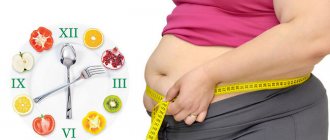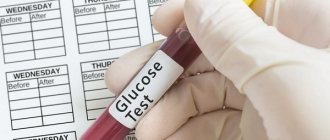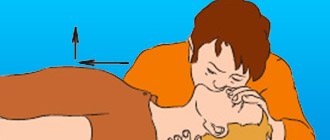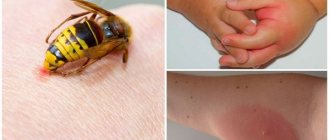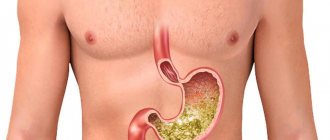Author Tatyana Piteryakova
23.10.2019 15:01 (Updated: 15.06.2021 08:13)
Health » Your health
Some people may have accidentally choked on food and coughed at some point. However, sometimes the problem is more serious: food or an object gets stuck in the throat or esophagus and cannot move further. In this case, breathing becomes difficult, the person experiences a spasm, characterized by severe pain and the risk of suffocation. It is important to react correctly to this situation.
Who is most likely to choke?
The risk of choking is highest in the following groups:
- children under five years of age,
- older people,
- suffering from neurological diseases,
- suffering from chronic acid reflux,
- suffering from acute respiratory diseases,
- people with injuries and anatomical abnormalities that affect the swallowing process (for example, with a cleft lip).
How to choose a toy as a gift?
Find out how to choose a safe toy for your child so that no play ends in an accident.
Some eating habits increase a person's chance of choking:
- eating food too quickly
- eating while standing, sitting in an awkward position or lying down,
- poor chewing of food,
- eating too dry and hard foods.
3rd step
If the previous technique did not help, use another one - abdominal thrusts.
- Bending slightly, stand behind the victim, clasping his upper abdomen with both hands.
- Tilt the choking person forward slightly.
- Make a fist with your hand and place it on the victim's upper abdomen (two fingers above their belly button).
- Hold your fist on top with your other hand. Make a sharp push, directed inward and upward. Repeat this pressing action no more than five times. If your actions do not produce results, call an ambulance.
How to avoid choking from objects stuck in the throat?
Approximately 60 percent of choking deaths are caused by food getting stuck in the throat. The most dangerous foods are those whose pieces are close in size to the diameter of the respiratory tract. Encourage children to chew their food well
and make sure your older relatives have properly fitted dentures.
Try not to give your baby drinks and solid food at the same time. Do not allow your baby to eat on the go or while playing. Teach him to sit quietly and not be distracted while eating. Also, only buy toys for your child that are appropriate for their age
. Keep small items that may cause choking hazards locked away.
How to protect yourself?
- Try to avoid situations that provoke fainting: do not stand for a long time or stand up suddenly.
- Isometric exercises are useful, which include a wrist expander, which trains the reflex to maintain optimal blood pressure in the body.
- Increase your fluid intake and do not limit your salt intake (unless contraindicated). This gives an increase in circulating blood volume.
- If you feel the approach of fainting in transport, cross your legs and sharply rhythmically tense your abdominal and thigh muscles several times. This will help increase blood flow from the lower extremities to the head.
- If you feel like you're starting to faint on the street, sit down on one knee, as if you were tying a shoe, or put one foot on a raised platform - this will protect you in case of a fall.
How to help someone who is choking?
If a person chokes and coughs, this means that his airway is not blocked. There is no need to help him by hitting him on the back - let the person get rid of the stuck object on his own. Otherwise, your attempt to help may result in the stuck object slipping even deeper. If you can’t clear your throat on your own
, help the person take a more comfortable position - tilt him forward and down, ask him to take a slow, gentle breath and exhale sharply, encouraging him to clear his throat.
A large object stuck in the esophagus causes not only discomfort, but also an increased risk of damage to this part of the gastrointestinal tract. In this condition, urgent medical attention is required. If a person is choking
, unable to cough or speak, this means that a foreign body has entered the respiratory tract.
In this case, you need to urgently call an ambulance and try to help the victim yourself. To do this, the so-called Heimlich method
: 1. Grasp the victim with both hands from behind - place both hands between the navel and the bottom of the ribs. 2. Make one hand into a fist, place it on your stomach, and clasp it on top with your other hand. 3. Sharply bending both arms at the elbows, sharply press your fist on the victim’s stomach. Repeat this procedure until his airway is clear.
You need to know this
A fracture is a serious injury that requires mandatory and urgent medical attention. Find out why bones break and how to provide first aid for fractures.
Helping an adult who is choking
First you need to remove any remaining food or, for example, a denture from the victim’s mouth. Next, sit the person on a chair and ask him to breathe slowly and deeply. Thanks to this, spasm of the respiratory tract and esophagus will be eliminated.
You need to put the person straight and stand behind him. Then hug him with your arms at the waist, slightly above the navel, joining your hands into a single fist. It must be pressed firmly against the left abdominal wall, thereby increasing internal pressure.
Thanks to this, excess air from the lungs will be eliminated, and the foreign body will be able to exit. If a person is unconscious, artificial respiration must be performed until the ambulance arrives.
suffocation
Context
The man died during the celebration of Maslenitsa in the park on Minskaya Street on Saturday, March 12. According to eyewitnesses, the man took part in a speed-eating pancake competition. Suddenly he wheezed and soon died. A forensic examination showed that the cause of death of the 60-year-old Voronezh resident was “asphyxia when a foreign body entered the larynx,” in other words, he simply choked. Doctors stated that the Voronezh resident was killed by unprofessional first aid.
If a child chokes
Children under 5 years old should not put pressure on their stomach - there is a risk of damaging the liver. A child under one year old should be placed with his stomach on the inside of his arm, supporting his head with his palm. With your second hand, lightly tap the same interscapular area (up to five times). When a foreign object flies out, the palm of the person providing assistance can feel it.
If the method does not help, you need to turn the child on his back, press the middle of the chest five times with two fingers, put it again on the inside of the arm and again perform five light blows on the back.
If a child aged from one to 5 years is choking, the technique is the same, only you should put him on his hip.
First aid for an attack of suffocation
Asphyxia (suffocation) is a condition characterized by a sharp lack of oxygen and excess carbon dioxide in the blood and tissues.
Asphyxia occurs due to impaired external respiration. Causes of a feeling of choking in the throat:
- mechanical obstruction to air access from compression of the respiratory tract from the outside;
- tumor growth;
- spasms of the muscles of the larynx (laryngospasm);
- respiratory muscle paralysis;
- airway obstruction (asthma, bronchitis);
- entry of food, water, vomit and foreign bodies into the respiratory tract;
- poisoning from carbon monoxide or other toxic fumes;
- electric shock.
Treatment
Help before diagnosis
If the disorder occurs occasionally and is caused by the habit of talking while eating, specific therapy is not required. The appearance of regular choking while eating, as a result of which a person cannot eat normally, indicates severe damage to the brain or other systems, which requires qualified medical care.
Conservative therapy
Medical tactics consist of eliminating or slowing down the progression of the underlying disease that caused choking. For myasthenia gravis, physiotherapeutic methods and massage are indicated to improve muscle function. In severe situations, when independent food intake is impossible, parenteral nutrition is provided. For etiotropic and pathogenetic treatment, drugs such as:
- Anticholinesterase drugs
. Medicines from the proserin group improve neuromuscular transmission processes and eliminate the causes of choking. To achieve a lasting clinical effect, they are taken for several years. - Glucocorticoids
. Hormones are used in severe forms of encephalitis to prevent brain swelling. They are also recommended for rapid progression of myasthenia gravis and amyotrophic lateral sclerosis. - Antipsychotic drugs
. Prescribed for serious mental disorders, which are accompanied by swallowing disorders and food getting into the larynx. Antipsychotics and tranquilizers are effective for quick relief of symptoms.
When to start providing help?
If a person manages to cough, this is a sign of mild blockage of the upper respiratory tract by a foreign body. In this case, there is no need to prevent the person from clearing his throat: when coughing, the foreign body can come out on its own. You should not give water: the body has a respiratory and digestive system, and if liquid gets into the stomach, it will not help the respiratory tract.
– When a person wheezes, practically stops coughing and breathing, and his skin turns pale or blue, his upper respiratory tract is completely blocked. There is not much time to help the victim - one and a half to two minutes, but with a competent approach it will be enough,” explained Lyubov Kichanova.
Causes of choking while eating
Bulbar syndrome
A pronounced symptom occurs with bilateral damage to the nuclei of the caudal group of cranial nerves, which are responsible for the act of swallowing. Patients choke while drinking and self-feeding is impossible. There is no swallowing reflex, so saliva flows from the corners of the mouth. Choking is also caused by atrophy of the tongue muscles, which makes patients unable to chew food normally. The main diseases accompanied by bulbar syndrome:
- Stroke
. - Inflammatory and infectious causes
: Lyme disease, tick-borne encephalitis, Guillain-Barré syndrome. - Genetic pathology
: Kennedy disease, porphyria. - Damage to nerve cells
: syringobulbia and syringomyelia.
Myasthenia gravis
Choking with myasthenia gravis is associated with weakness of the muscles of the larynx, which contributes to the free flow of food masses into the trachea and bronchi. The disorder is pathognomonic in the bulbar form of the disease - patients choke while eating and drinking liquids. Characterized by variability of manifestations during the day, aggravation of symptoms after physical or mental fatigue. Similar signs are detected in half of those suffering from a generalized form of myasthenia gravis.
Amyotrophic lateral sclerosis
Swallowing disorders are observed in the later stages of the disease, after the development of muscle weakness in the limbs. At first, choking on solid food is observed; as amyotrophic lateral sclerosis progresses, patients constantly cough and gag while eating. The symptom is combined with speech impairment; saliva usually accumulates in the mouth, which patients cannot swallow.
Mental illness
In this case, choking has no organic cause. Symptoms are caused by dysfunction of the cerebral cortex and inappropriate behavior in severe mental disorders. Patients choke on both drinks and solid food, and sometimes fluid flows through the nose. At the same time, a painful paroxysmal cough begins, soreness and discomfort occur in the throat.
Chronic obstructive pulmonary disease (COPD)
Normally, a person swallows food while exhaling, when the airways are closed by the epiglottis and soft palate. In COPD, there is indiscriminate contraction of the muscles of the pharynx and larynx, resulting in a reflex inhalation when swallowing food. An attack of severe coughing begins, which is associated with irritation of the larynx with pieces of food.
Rare causes
- Developmental anomalies
: hypoplasia of the larynx, cleft palate. - Gastrointestinal pathologies
: diaphragmatic hernia, reflux esophagitis. - Traumatic rupture of the vagus nerve
.
